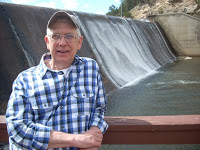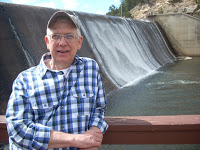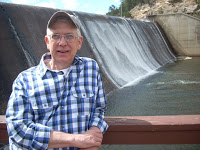I knew the childhood chant, “April showers bring May flowers” long before I learned, “In Time of Silver Rain.” Langston Hughes wrote the poem; I learned it as a song when I was twenty-one and newly-married, an undergraduate studying theology and music. It seemed the springtime of my life. The Poet said it this way: “In time of silver rain/The earth/Puts forth new life again.”
For years I was amazed that the church’s celebration of its main stories—the death and resurrection—were so attached to geography. I’m not thinking of Jerusalem in Israel but rather of Earth’s northern hemisphere. Easter symbols were springtime symbols. Lenten preparation took place at the time of lengthening days. Easter symbols sported flowers and eggs and sunrises. Of course, that made a kind of sense to me, but what would religious life in the southern hemisphere make of the shortening of days leading up to the same events preached and celebrated in the north? What effect would Easter in the fall have on its meaning down there? (I saw a postcard from Brazil of Santa Clause riding a surfboard.) The questions seemed real to me.
In springtime I now appreciate most the warming trend, the eventual return to wearing shorts and sandals, eating out of doors, and playing in longer daylight hours. I don’t look forward to the rebirth of weeds I’ll have to pull or Japanese beetles that will go to war in the vines, flowers and garden, or the squirrels that will eat the tomatoes and winter squash. But still there is a kind of positive magic in longer days, green grass, shade trees, even suntans.
Yesterday I was trimming back some bushes that had barely begun to leaf out and raking up leaves deposited in hard-to-manage corners of the yard. Jim has been at it for weeks. I don’t do much yard work but do have my specialties, and I’m back to work—applying sunscreen, getting out summer clothes, packing away the flannels, corduroys, and sweaters. It’s spring. Enjoy the great out of doors or just the backyard. Clean it up. Invite over the neighbors for grilled specialties. Talk over the fence where it’s not too high. Socialize. Bring things alive. Yes.
Yesterday I walked in my Birkenstock Arizona sandals, ones I had not worn for months. They began irritating my feet and I remembered I hadn’t worn them long last fall. They weren’t really broken in. Then my left knee—the better one—started screaming at me like the right one often does. I realized here in spring I am deteriorating. And we need more, much more silver rain and soon. I wondered if when my knee quits, will I get one of those electric buggies. (One friend called his the electric chair.) If so, I’m sure I’ll decorate it with flowers and carry my rainbow colored umbrella holding onto the hope for silver rain and new life.
© 16 April 2018
About the Author
Phillip Hoyle lives in Denver and spends his time writing, painting, and socializing. In general he keeps busy with groups of writers and artists. Following thirty-two years in church work and fifteen in a therapeutic massage practice, he now focuses on creating beauty. He volunteers at The Center leading the SAGE program “Telling Your Story.”
He also blogs at artandmorebyphilhoyle.blogspot.com









